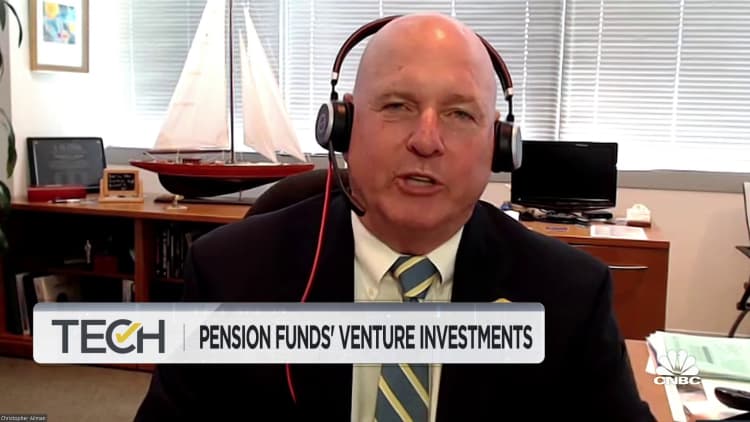10’000 Hours | Digitalvision | Getty Images
Pension plans for the largest U.S. companies are at their healthiest in more than a decade — and that’s largely good news for the workers who participate in such plans, said retirement experts.
Public companies in the S&P 500 stock index had an average pension “funded ratio” of 102% as of Sept. 21, according to data tracked by financial services firm Aon. That’s the highest level since at least the end of 2011, when the ratio was around 78%.
A funded ratio is one way to gauge pension health. It measures a company’s pension assets versus its liabilities. In other words, it assesses the money a pension has on hand versus the funds a company needs to pay future pension income to workers.
More from Personal Finance:
Social Security’s trust funds are running dry. 4 things to know
This account is like an ‘extra strength’ Roth IRA
‘Financial vortex’ may reduce retirement savings by up to 37%
A funded level of 100% or more means it currently has the assets on hand to meet it future obligations.
“This is a really good thing,” Byron Beebe, global chief commercial officer for Aon, said of the current funding level. “It’s at the highest it’s been in a really long time.”
Of course, pension funding is merely a “financial snapshot … at a single moment,” according to the American Academy of Actuaries. It can change based on factors such as the health of the U.S. economy. Each plan is unique, meaning funded status alone isn’t the only gauge for pension health, it said.
Why pension funding is important for workers
Pensions in the private sector have become rarer over the decades as companies have replaced them with 401(k)-type plans.
Pension plans are also known as “defined benefit” plans, since workers’ future benefit is defined according to a formula based on factors such as tenure and salary.
At their peak, in 1983, there were 175,000 defined-benefit plans in the private sector, according to U.S. Department of Labor data. By 2020, that number had declined to about 46,000.

Many of those plans are “frozen” and no longer allow workers to accrue benefits, however.
As a result, there are fewer “active” participants who continue to earn pension credits. In 1975, there were 27.2 million active participants. By 2019, the number had fallen by more than half, to 12.6 million, according to the Congressional Research Service.
In total, there are about 32 million participants in corporate pensions, including both active participants and those no longer accruing benefits, according to the Labor Department.
Having a healthy pension plan makes it more likely companies with active plans will hold onto them and won’t terminate or freeze them, Beebe said.
This is a really good thing. It’s at the highest it’s been in a really long time.
Byron Beebe
global chief commercial officer for Aon
In extreme cases, underfunding can also lead to a benefit cut, experts said.
Companies with failed pensions may transfer their obligations to the federal Pension Benefit Guaranty Corp., which serves as a financial backstop that guarantees pension benefits.
However, beneficiaries aren’t assured to get their fully promised payout. That’s because PBGC insures benefits up to a limit, based on age. Most pensioners aren’t affected by this limit, PBGC said, but those who are would get a benefit reduction.
Why plan funding has improved
Thomas Barwick | Digitalvision | Getty Images
Corporate pension funding languished after the 2008 financial crisis.
The recent improvement is largely attributable to three factors: a rise in interest rates, strong stock performance and policy changes to how some companies fund their plans, said John Lowell, partner at October Three, a pension consulting firm.
Due to how pension liabilities are calculated, having a higher interest rate on bonds generally means companies don’t have to contribute as much money to their pensions today to satisfy future benefits, Lowell said.
The insurance premiums companies pay to the PBGC also generally rise according to a plan’s level of underfunding, and those premiums have increased significantly, Lowell said. As a result, companies are more proactive about making contributions to their plans to ensure they’re fully funded, Lowell said.
Aside from a few periods such as 2022, asset classes such as stocks “have been performing well for a solid 10 years or more,” boosting plan assets, Lowell said. The S&P 500 lost more than 19% in 2022, its worst showing since 2008.
Companies have also adopted investment strategies that fluctuate less with the whims of the investment markets, said Beebe at Aon. In a simple sense, with a portion of the portfolio, they buy bonds whose income matches that of future pension promises, offering more predictability, he said.

